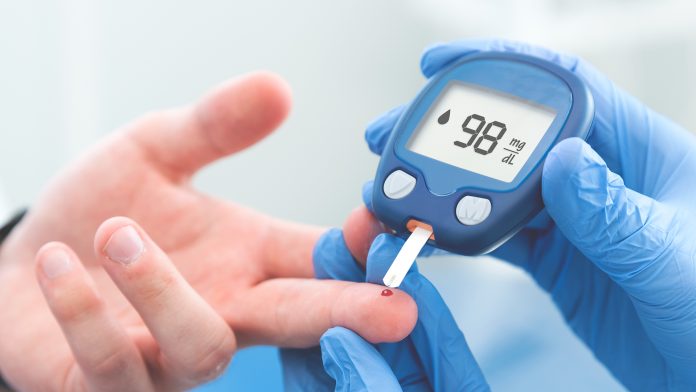
Dr Sharad Purohit, Assistant Professor and Paul Tran, MD/PhD student at the Medical College of Georgia, explore the evidence that the CCR2 gene may be a cause of type 1 diabetes progression.
Often diagnosed during childhood, type 1 diabetes (T1D) is an autoimmune disease where the pancreas does not make, or makes very little, insulin. An estimated 537 million adults are living with diabetes worldwide, with type 1 diabetes accounting for 10% of cases.
It is thought to be caused by an autoimmune reaction that destroys beta cells – the cells that make insulin – in the pancreas. Genetics can play a part in developing T1D, although many people who have the genes that make them susceptible to developing T1D do not go on to develop the disease. Environmental triggers, such as a virus, can also activate the development of T1D.
Now, there has been a study which has identified a new gene thought to contribute to the progression of T1D. It was reported that when the CCR2 receptor and its ligand CCL-2 get together, the risk of developing T1D increases. Health Europa spoke to the study’s authors, Assistant Professor Dr Sharad Purohit and MD/PhD student, Paul Tran at the Medical College of Georgia, about how these findings could potentially delay progression of the disease.
How much was known about the causes of type 1 diabetes prior to your study?
We knew that the human leukocyte antigen (HLA) region on chromosome 6 was strongly associated with the risk of T1D. The additional loci that were found to be linked with the risk of T1D were the insulin variable number of tandem repeats (VNTR), CTLA-4, and Protein Tyrosine Phosphatase Non-Receptor Type 22 (PTPN22). In the early 1980s, autoantibodies to insulin autoantibodies (IAA) were shown to correlate with the progression to T1D. The progression of T1D was stratified by the presence of three autoantibodies combined with HLA risk. Although there are several genes found associated with T1D, no causal variants have been identified
for T1D.
The primary aim of the Diabetes Autoimmune Study in the Young (DAISY) was to learn how genes and the environment interact to cause childhood (type 1) diabetes. What genetic and environmental triggers were considered in this study and how did the data inform your own research?
T1D is considered to be a collision of the child having high-risk genes and environmental triggers. Ongoing studies, like those at the Medical College of Georgia, are working to uncover more of those genes and triggers. The new study focused on 42 individuals who continually had antibodies against the insulin-producing islet cells but never actually developed T1D, 48 individuals who developed T1D, and the remainder who did neither and served as the control group.

We have previously measured serum levels of four proteins (IL-1ra, IL-8, MCP1 and MIP-1beta) in the serum of DAISY subjects. Having a relative with T1D or having one of the genes associated, are two genetic triggers that show the patient is at high-risk of developing T1D. Other genetic triggers were identified from the publicly available Genome Wide Association Studies’ (GWAS) datasets from the Type 1 Diabetes Genetics Consortium (T1DGC).
What did your study reveal about the connection between blood levels of the ligand CCL-2 and the disease?
The study found that blood levels of CCL-2 were lower in both individuals who had antibodies but not the actual disease, as well as those who developed T1D. Both these groups have more of the receptors on their immune cells, which get recruited by the ligand to the pancreas.
It was well known that the physical location on a chromosome, in this case the 3p21.31 locus where CCR2 is located, was associated with T1D in non-humans. Two small genetic variants, or SNPs, in that locus are what cause a higher expression of CCR2 which causes the lower blood levels of its ligand.
In our analysis, serum levels of CCL-2 were reduced in individuals with T1D in the Phenome and Genome of Diabetes Autoimmunity study (PAGODA),1 and the DAISY dataset.2 In the study we have shown a mechanism involving CCL-2 and its receptor CCR2 in the development of T1D.
How could your findings be used to potentially delay the progression of disease? What factors would need to be considered to ensure this could be effective?
Our study provides the mechanisms that could lead to potential therapies that may delay the progression of T1D in at risk individuals. For potential therapies, several factors including the genetic makeup of the individuals, genetic risk, exposure to environmental factors, and the timing of therapy are important considerations.
References
Dr Sharad Purohit
Assistant Professor
https://www.linkedin.com/in/sharad-purohit-03333a1b/
Paul Tran
MD/PhD student
Medical College of Georgia at Augusta University
www.augusta.edu/mcg
This article is from issue 20 of Health Europa Quarterly. Click here to get your free subscription today.







